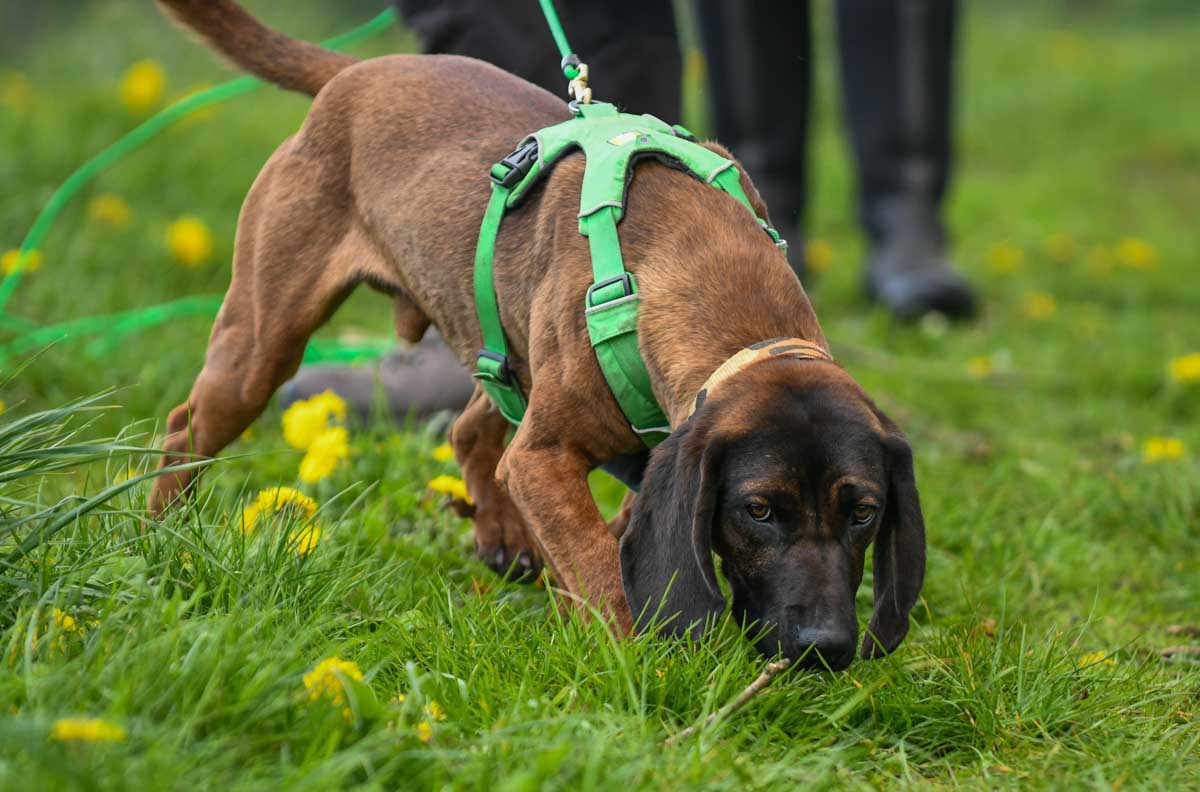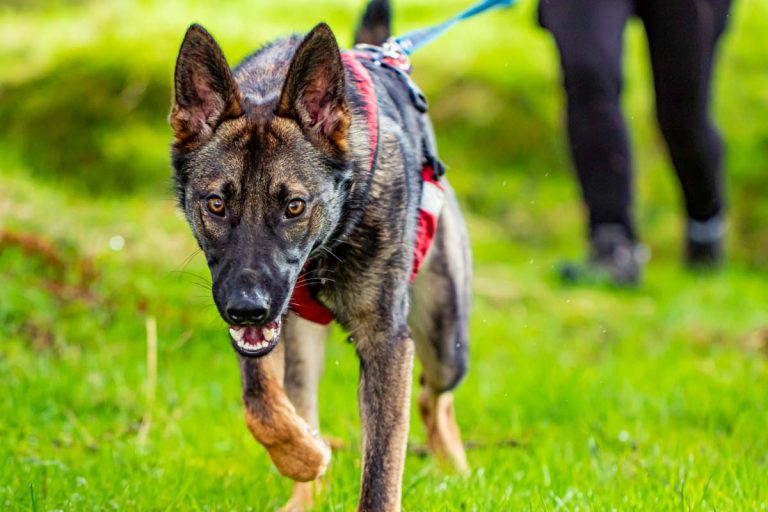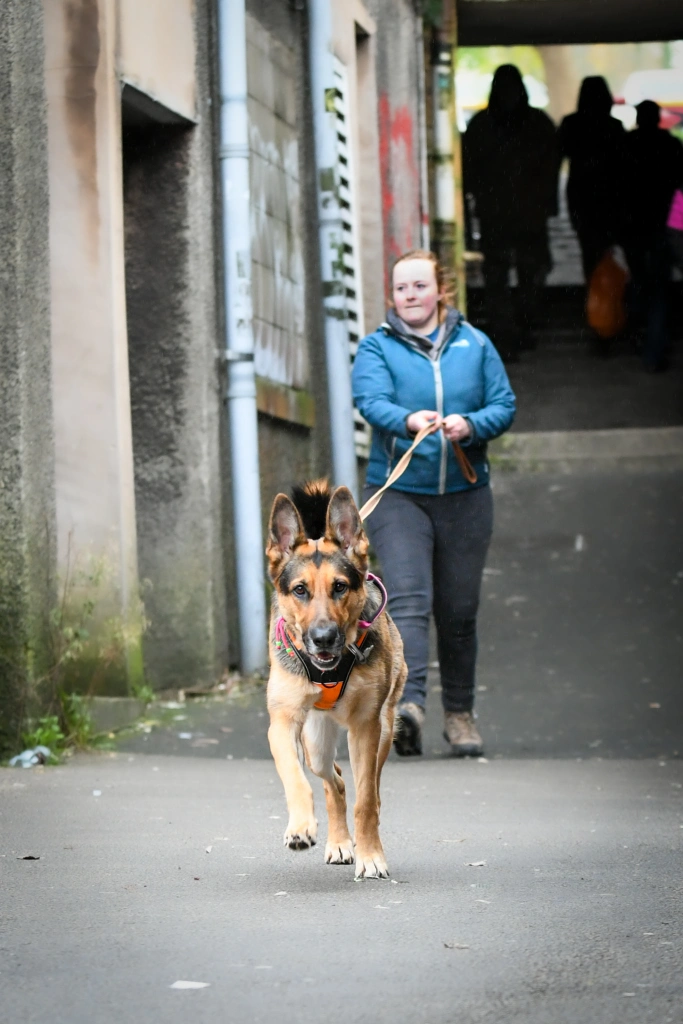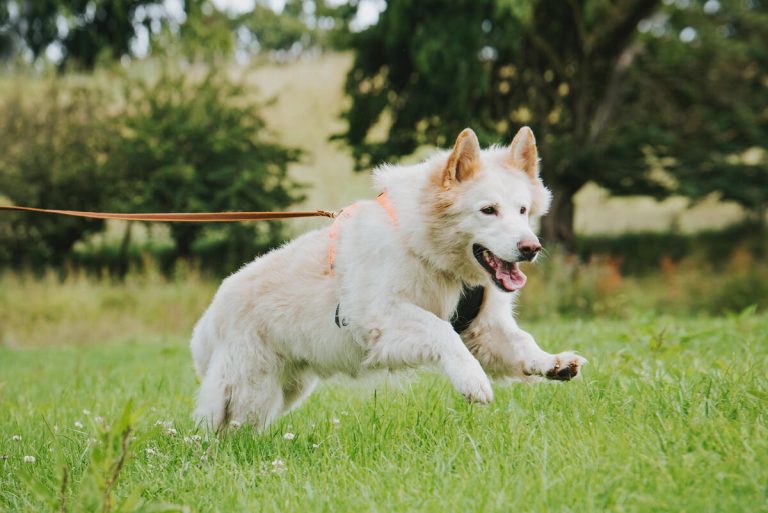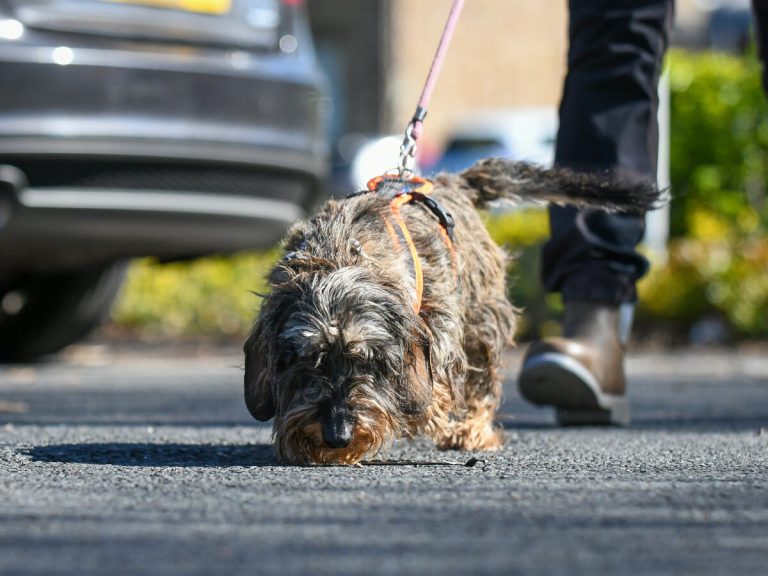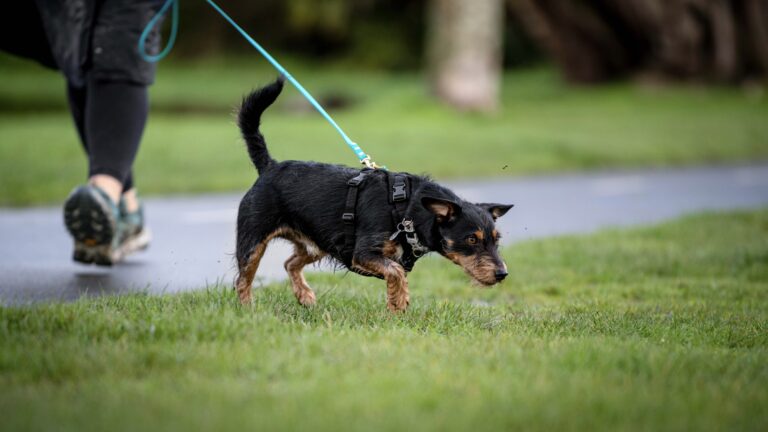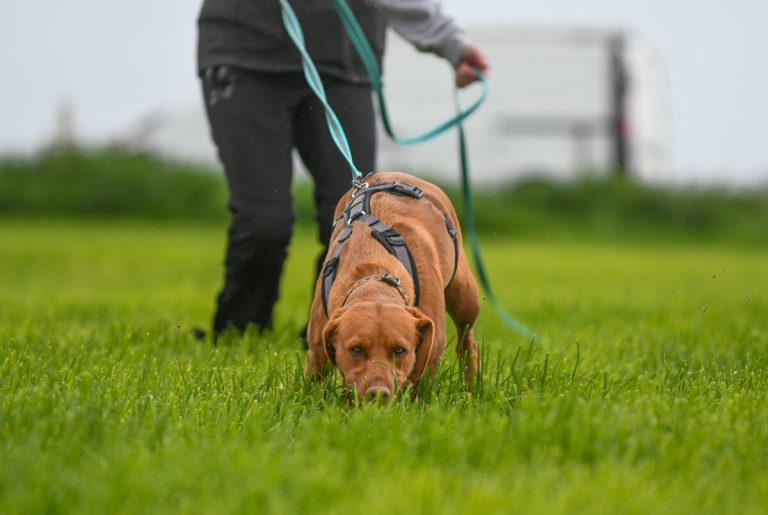What is the Difference Between Mantrailing And Tracking Dogs?
I am often asked ‘what is the difference between mantrailing and tracking when it comes to dog sports?’
They all involve the dog using their nose to follow the scent of a person who has walked a trail.
Mantrailing dogs typically do not follow footsteps, but where the scent has gone, which can be a good distance away from the footstep trail due to the environment and how dogs work.
Tracking is a nose down sport where the dog is required to follow the ground disturbances made by footsteps and the scent left by the person as accurately as possible.
When you add the two together its known as trailing, which is a mix of the two and what more operational dogs use worldwide.
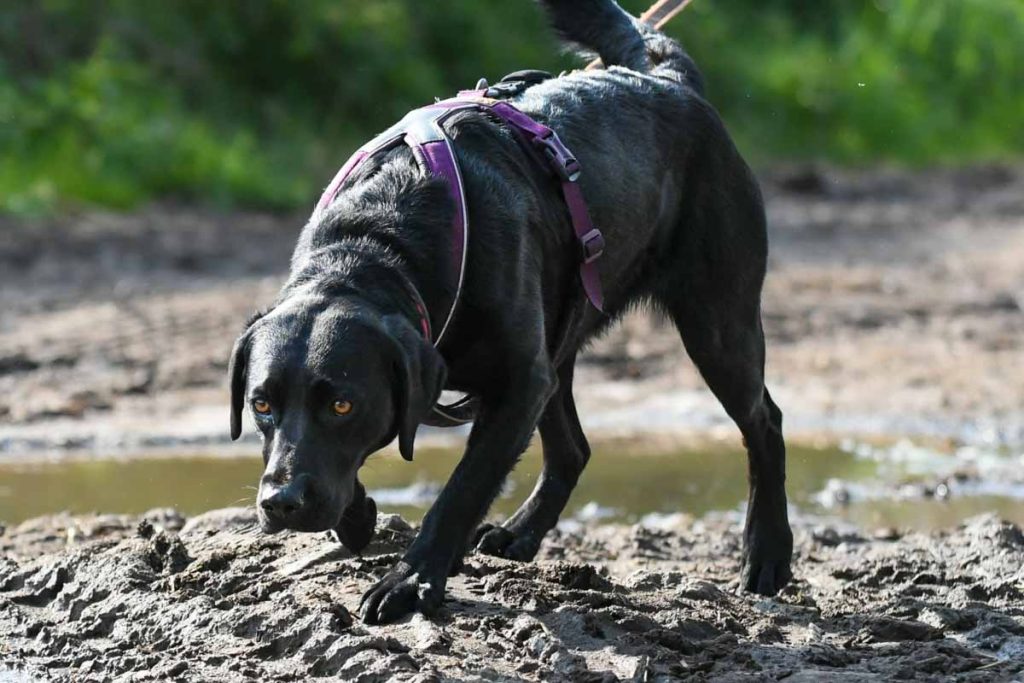
Mantrailing as a Dog Sport
Mantrailing is a sport where it is the dog’s job to find a specific person who is hidden or ‘missing’ starting with an object that smells like the person, also known as a scent article. The dog searches only for that person and will use scent from the ground, air, vegetation and any available scent source.
Typically the dog would not be searching for its owner but someone else. The dog is not required to follow the trail perfectly, and instead follows the scent wherever it may be due to environmental changes and disturbances. The dog is free to use scent in the most natural way to them.
Contamination from other sources such as other people, livestock, wildlife and the environment aren’t an issue as the dog is taught only to sniff out that specific person while ignoring other factors out there.
Mantrailing as a sport is relatively new in the UK, but is gaining traction quickly as it is a dog sport that is accessible to many people. You don’t need a private place to set up the trails and any breed can excel in it. In fact, the dogs are able to work in busy town centres or dense woodlands with no issue. It is so exciting to see a dog usually labelled as unruly or difficult, learn the game of mantrailing effortlessly.
Because dogs don’t need to be perfect on the trail and can use scent however they wish, many dogs find the experience freeing and really enjoy it. You see lots of breed traits come into play when mantrailing and some excel at it more than others.
The reward for mantrailing typically comes at the end of the trail from the trail layer, but some breeds find the action of finding someone a reward in itself. Still, the trail layer is always at the end of the trail waiting to reward the dog in some way, the reward is never phased out.
You always need someone to hide for your dog with mantrailing, and this can make it harder to do at home.
There are only a few assessment levels in the UK and most people choose to enjoy the sport for fun rather than gaining titles as their dogs love doing it.
Tracking as a Dog Sport
Tracking occurs when a dog follows the ground disturbance made by the footsteps of a person, along with the scent left by the person as well. This is usually the owner but it can be anyone because the dog is not specifically searching for the person but rather the ground disturbance. The dog might also be looking for articles that have been left on the track as well, which are handed by the track layer. This is a different article to the scent article used in mantrailing.
You can do tracking on your own as you just need land to be able to pace the track out and let it age.
The dog is required to keep its nose on the track and be as accurate to the track as possible, while working at a steady pace, as accuracy is highly rewarded in tracking.
The reward for tracking typically comes on the track at the start by using food in each footstep, or small disks of food on with the dogs closely following the footsteps of the track layer. Over time this food reward is phased out. There is no one at the end of the track either, but rather there is a larger food reward for the dog to find.
There are a number of organisations and combination sports in the world which assess a dog’s skill to accurately follow a track over different surfaces as accurately as possible. The dogs are scored in various ways and the sport has been long established in the UK with many titles to achieve.
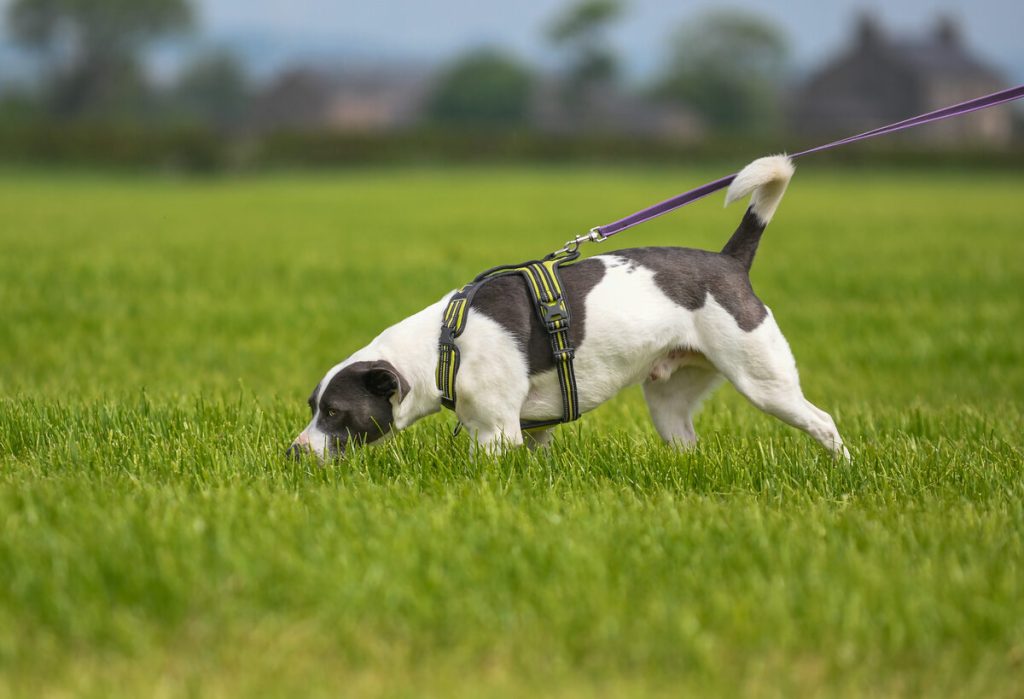
Why the Confusion?
A lot of confusion between mantrailing and tracking comes from the word ‘tracking’ being used in both sports. Tracking was also heavily used before mantailing became recognised as its own sport, and not just by search and rescue or police operations.
The terms are still used interchangeably by many people, and mantrailing is just gaining traction as a term in the UK. It is no longer guessed to be a dating app or miss read as “Man Training” but is becoming a term in itself like Agility, which when it first started didn’t link to dog sports at all but is now known in the average household as a dog sport even if people don’t compete or even own a dog.
Tracking dogs are absolutely used by the police force and they often start off teaching them to footstep track before moving them on to trailing which is more free and then on to mantrailing for operational work when finding criminals and missing people.
Trailing is generally a combination of tracking and mantrailing, it will have an article to start and there may be articles on the track, and there may be a person at the end. It is a combination of the two in order to best suit the dogs needs to build success and also learn the foundations.
So tracking, trailing and mantrailing can be used together to build a confident and efficient search dog.
The search and rescue community in the UK often use air scenting dogs which are trained to find any human scent in a usually rural or woodland environment. There are only a few operationally trained mantrailing dogs in the UK deployed to find a specific missing person so the use of mantrailing dogs is not heavily publicised in the UK.
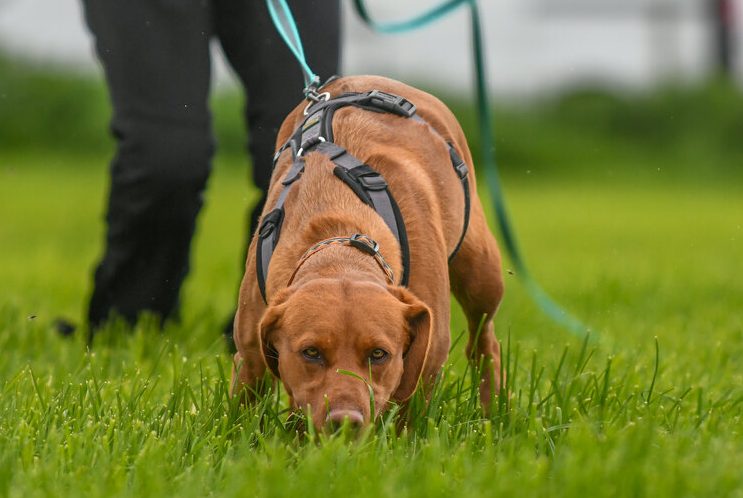
Conclusion
Much of the difference between tracking and mantrailing comes from the way we ask a dog to work. Mantrailing is more freerange than tracking, and tracking is more precise than mantrailing but both sports are great fun for dogs and provide them with a natural outlet for sniffing and problem solving. Both sports are done on lead at all times, and is suitable for all breeds. There are trainers up and down the country which people can get started with.
This overlap in knowledge means they can be done together as sports and both will enhance a dog’s nose skills. Tracking will help a mantrailing dog be more accurate on the trail and mantrailing can help a tracking dog use scent more efficiently.
I have gained knowledge from various sources but most notably the Scent Imprint for Dogs Tracking and Trailing Instructors course which helped me secure the differences, and similarities which all help build the dogs abilities.
You should look into starting with mantrailing or tracking as a way to build a better bond with your dog, learn to read the dogs body language and have some fun in a community of amazing people. It is also a great natural outlet for your dog’s energy that is low impact on the joints but high impact on the brain.
Listent me have a discussion about the difference between the two sports, and my journey working with Scent Imprint for Dogs to learn more about tracking and trailing.

